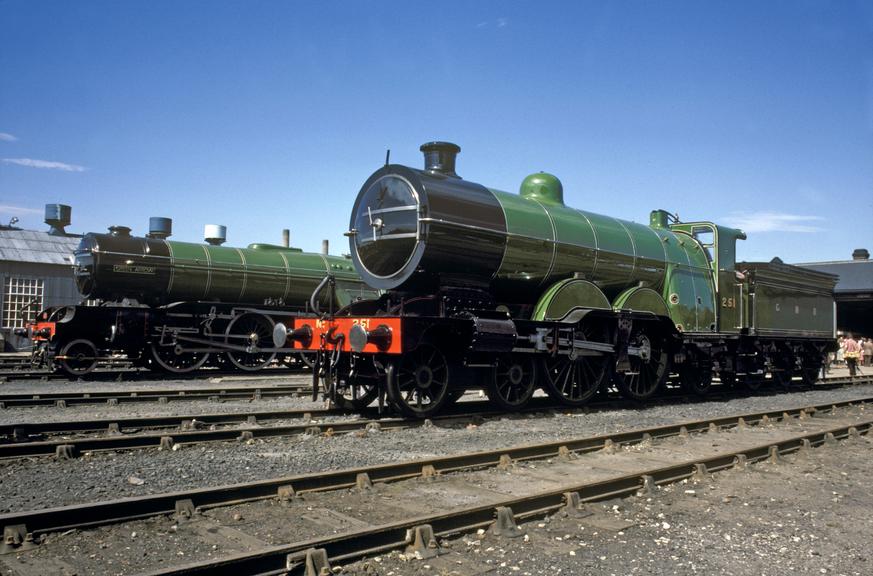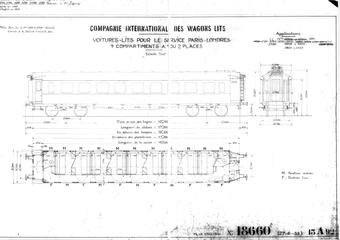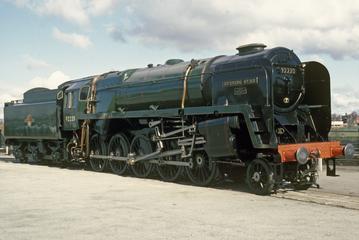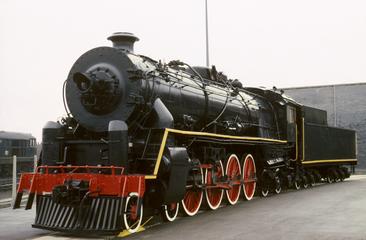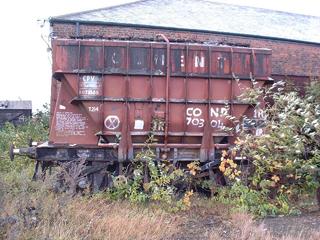Great Northern Railway, locomotive 251
Steam locomotive and tender, Great Northern Railway, 4-4-2 No 251, designed by H A Ivatt, built at Doncaster in 1902, withdrawn in 1947.
More
The Great Northern Railway’s (GNR) 94 large boiler Class C1 Atlantics were designed by Henry Ivatt and were built between 1902-1910. They would haul express trains between London King’s Cross and York. Ivatt’s large boiler Atlantics began a locomotive philosophy which was to be faithfully perpetuated by Nigel Gresley in such engines as ‘Flying Scotsman’.
Ivatt’s first Class C1 design entered service in 1898 and gave scope for further performance upgrades. He therefore used it to create a locomotive with enlarged boiler and wider firebox with large fire grate to ensure an adequate supply of steam. Compared with the original small type, the new boiler gave a 72% increase in evaporative heating surface and better adhesion. No 251 was the first to emerge from Doncaster Works in 1902, and series production commenced in 1904.
Teething troubles were experienced with the draughting. A screw reverser – the control used to set the valve cut-off – could not be fitted and a lever reverser with vacuum clutch was used instead. A firebox redesign in 1906 enabled the use of a steeper grate to allow coal to tumble forward inside. Three of the class were built as compound locomotives with limited success. In 1910, a final batch of ten were given piston instead of slide valves and had superheaters and larger diameter cylinders.
Succeeding Ivatt in 1911, Nigel Gresley continued to process of improving the Atlantics by fitting and upgrading superheaters. Transferring to London and North Eastern Railway ownership in 1923, the type retained the Class C1 classification. By the late 1930s, the class was performing much of its best work. Perhaps the most celebrated feat occurred in 1936, when No 4404 deputised for an A3 Pacific and hauled a heavy 585-ton express over the 83 miles from Grantham to York in 88 minutes, reaching a top speed of nearly 80mph. However, the proliferation of Gresley’s Pacifics meant the class was relegated to secondary duties, with many transferred to Sheffield and Cambridge.
Withdrawals took place between 1943 and 1950. No 251, renumbered 3251 and 2800 since 1923, was preserved in 1947 and partially restored to GNR condition. It was steamed again in 1953, along with "Henry Oakley", to celebrate the Doncaster Plant centenary. It has since been on static display at locations including York, Bressingham Museum and Barrow Hill Roundhouse, and since 2021 at the Danum Gallery, Library and Museum in Doncaster.













